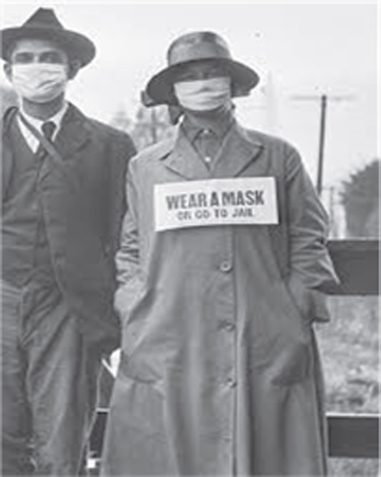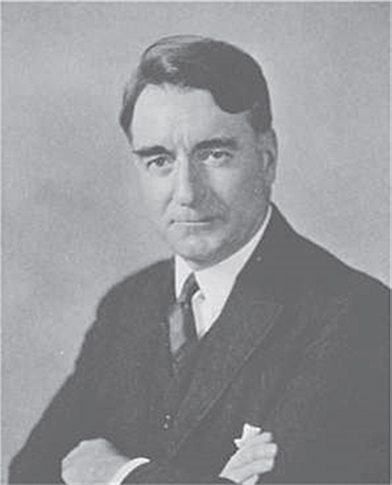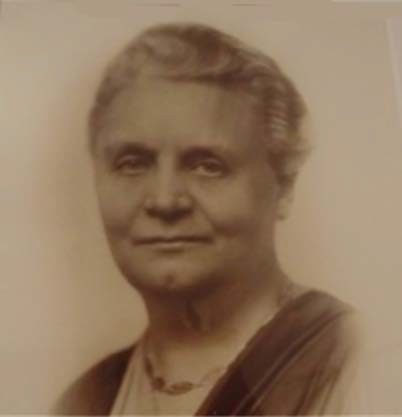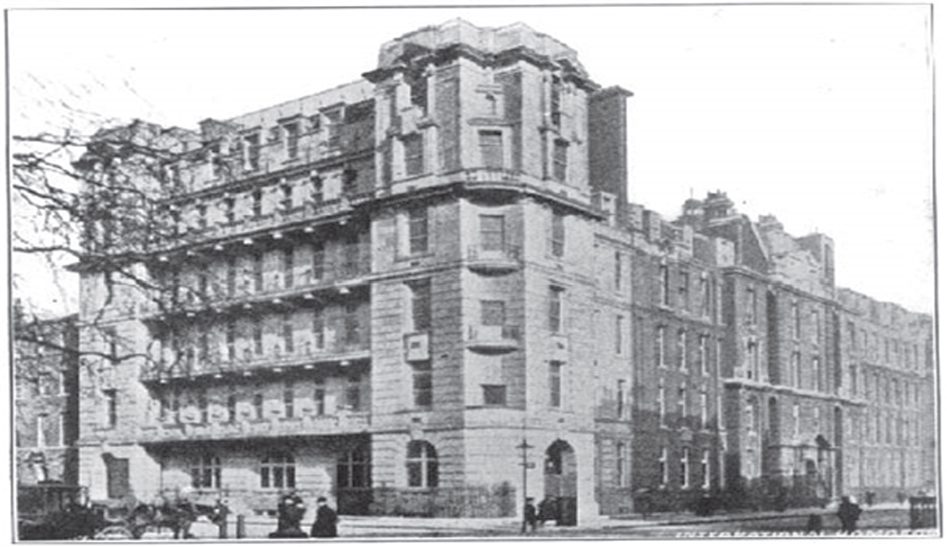
Homeopathy for Spanish Flu and COVID-19
Stefanie Jahn, MD
Abstract: Many aspects of the current COVID-19 pandemic and its accompanying social discourse resemble the Spanish flu pandemic. Homeopaths worldwide—now, as then—engaged in debate and associated medical controversy. They exchanged ideas about the illness, its etiology and treatment. There are many overlaps in the homeopathic remedies used then and now. The data from that time confirms the importance of keeping the most precise case records possible.
Keywords: Arsenicum album, Bryonia alba, Gelsemium sempervirens, Influenzinum, Phosphorus, homeopathy, complementary medicine, case reports, Genus epidemicus, Spanish flu, lethargic encephalitis, Coronavirus, COVID-19, SARS-CoV-2, long-COVID, pandemic
The ‘flu’ is not dying down after all infections have now risen to four or five thousand a day, with eight hundred deaths. In some cases the disease runs its course with extreme rapidity within twelve hours all is over. The last rites. Apparently it is a variety of pulmonary plague.1
These remarks by the Russian composer Sergei Prokofiev, who lived through the second and third wave of the Spanish flu in New York, exemplify not just the preoccupation with current incidence data, now very familiar to all of us, but also illustrate the uncertainty over what kind of illness it really was. Homeopaths were confronted with such issues at the time as they are again now. In both pandemics, they have endeavored to alleviate patients’ fear while administering to their physical needs—an wholistic approach encompassing both mind and body. Whereas the influenza virus was only discovered more than a decade after the end of the Spanish flu, in 1933, researchers were recently able to classify the coronavirus relatively quickly. Homeopaths of that earlier time heatedly discussed the origin and classification of the illness while simultaneously being shocked at the aggressiveness of the pandemic and the resulting large numbers of the sick and dying. In the homeopathic journals of a century ago, there was virtually no trivialization of the Spanish flu pandemic, such as occurred early in the course of the pandemic in the wider public media where caricatures of the disease and satirical writings appeared. We find this same appreciation of the seriousness of the SARS-CoV-2 pandemic in our homeopathic literature now as well. Depending on their personal experience, homeopaths have frequently compared SARS-CoV-2 with the less harmful flu virus. As has often been the case regarding recent epidemics, homeopaths claim that their predecessors successfully treated Spanish flu.
Spanish flu novel epidemic or the same old flu?
Many homeopaths regarded Spanish flu as a novel plague, whereas others presumed it to be just the “same old” flu, and still others suspected other kinds of illness and rare pathogens. Like conventional doctors, homeopaths doubted the widespread doctrine of the time, which held “Pfeiffer’s bacillus” (Hemophilus influenzae) to be the cause. Miasmatic causes were also a topic of discussion.
Is it not more than likely that this last epidemic, with its peculiar virulence, was the result first of all of thousands of bodies so hastily interred in Flanders in the early days of the war, and then when the allied advance began with the tremendous explosions of the heavy artillery the bodies were unearthed, and the particles shot up into the air to be circulated all over the surface of the globe.2
Hospital-based homeopaths, particularly, commissioned laboratory analyses of the bacteria in sputum and blood to try to identify the origin of the illness. Time permitting, physical examinations and temperature checks were a part of the diagnosis and observation of disease progress and treatment. At the peak of the pandemic there was less time to pay careful attention. One diagnostic criterion was, “If a patient died in three days it was pneumonia; if he lived a week or two it was not pneumonia.”3
Although there were no authoritative recommendations for particular homeopathic medicines, and the procedures to identify and administer remedies were different, certain homeopathic medicines were frequently employed around the world: Aconitum napellus, Arsenicum album, Baptisia tinctoria, Belladonna, Bryonia alba, Gelsemium sempervirens, Eupatorium perfoliatum, Influenzinum, Phosphorus and Rhus toxicodendron. Many of these are also being prescribed in the current pandemic.
Transmission
It can be assumed that “a few years’ worth of dissemination will occur within a few hours in view of the development of aviation,” predicted the Mexican doctor and homeopath Mazari in his dissertation on Spanish flu in Mexico City.4
Not only is the pathogen transmitted at incredible speed but also information. At the start of the coronavirus pandemic, treatment recommendations flooded in from all over the world. Homeopathic associations and individuals took a stand. In many countries, homeopaths treated those infected with coronavirus. They also used homeopathic remedies preventively to minimize the risk of infection or sequelae. For severe disease they used homeopathic treatment alongside conventional approaches. They also attempted to prevent or treat possible complications of vaccination with homeopathic intervention. For this purpose, commonly used remedies have included Arsenicum album, Bryonia alba and Gelsemium. Frequent mention is also made of Aconitum, Antimonium tartaricum, Belladonna, Carboneum oxygenisatum, Camphora, Eupatorium perfoliatum, Ferrum phosphoricum, Lobelia purpurascens, Oscillococcinum, Phosphorus, Pulsatilla and Rhus toxicodendron.
Conventional treatment
Conventional treatment of the Spanish flu was symptomatic. The substances and invasive procedures used at the time were frequently associated with side effects and quite often made the patient even more ill. Simply declining such treatments not infrequently enabled the patient to recover. For SARS-CoV-2 there is still no specific treatment. Considerable hope is invested in vaccination. Severely ill COVID-19 patients need intensive care, yet capacity is restricted and only a limited portion of the world’s population has access to vaccines and respirators. Even basic medical care is not universally available. We witnessed the unequal distribution of medical resources in an especially stark way during April and May 2021 with the second wave of Covid in India. One hundred years ago, after World War I, there was no health service in many countries, and in many others it was only rudimentary or of very poor quality. Many doctors had been called up
to fight in the war and had died or fallen prey to the Spanish flu or other illnesses.
Complementary medicine
Due to the lack of medical personnel, scepticism of conventional medicine or a wish to supplement it, (homeopathic) practitioners without a medical degree as well as laypeople were consulted and continue to be so now. Then, as now, western medicine was not the only treatment available; traditional medical approaches such as Traditional Chinese Medicine, Kampo, naturopathy, osteopathy, etc. were utilized. Various forms of self-care to promote immune resilience have also played an important role.
Susceptibility
Like many other homeopaths, and consistent with Hahnemann’s injunction in §73 of the Organon, Chatterjee, a public health doctor during the Spanish flu crisis in Calcutta, identified the predisposing factors of overwork, anger, crowding, malnutrition, heat and cold.5
As today, fear and panic were also a topic of homeopathic concern.
For the element of fear was so great in some localities, due to much publicity regarding the mortality of the disease, that many were thrown into a state of frenzy the moment a diagnosis of influenza was made. Fear quickly paralyzes the central forces, making room for the rapid encroachment of disease and lessens the power of resistance.6
Even then, homeopaths were concerned with immunity and the question of who was especially vulnerable to contracting serious disease.
A large number of people fell ill consecutively up to four times. “Demonstrable immunity” was not seen. Neither prior illness nor vaccination ameliorated the course of the disease. There were “severe cases after mild ones and mild ones after severe ones,” as well as mild after mild and severe after severe.7
For SARS-CoV-2 there are so far no conclusive insights. Some people, although relatively few, became infected with SARSCoV-2 after the second mRNA vaccination. Others became infected a second time after having had the infection once before. Protective measures such as social distancing and the wearing of masks are therefore still widely recommended.
Distancing-hygiene-face masks
The controversies over face masks from the Spanish flu era have flared up again with the current pandemic.
During this pandemic, wearing of face masks had no greater prophylactic effect than the liberal consumption of whiskey, or the traditional camphor bags that were found hanging about the necks of so many children sick with influenza.8
Raue, a doctor at the Hahnemann hospital, found “that theoretically the mask is a good thing, but with faulty technique it is more than useless and may even prove harmful by making the wearer careless or by becoming contaminated.”9

Now, as then, hygiene and quarantine measures are a topic of discussion, and profiteering is criticized.
The manufacturers of proprietary remedies have naturally taken advantage of this hysteria and subway cars, elevated trains and surface trolleys constantly remind us, through skillfully worded advertisements, that it is our religious duty to guard against influenza by chewing, imbibing or consuming the delightfully efficacious examples of the pharmaceutists’ art—always, of course, at so much per box or bottle. Even our departments of health seem to help along the good work by telling people how, when and where to spit …. 10
Lockdown and the debate on openings
The widespread closure of schools, centers of culture, and shops at the start of the coronavirus pandemic has had a massive effect on society and triggered heated debate.
An important protagonist during Spanish flu was the homeopathic doctor and Health Commissioner of New York City, Royal S. Copeland. He decided against closing theaters and cinemas, instead decided to use them to disseminate public information. Before every performance there was an explanation of how flu is transmitted and how to protect oneself and others. Schools also remained open. Copeland wanted to avoid abandoning the children of poor families to their own devices. School lunches were provided and medical examinations conducted by doctors and nurses. If signs of illness were noted, they took care of the young patients.11

Royal S. Copeland
Treatment by homeopaths
The treatment of Spanish flu by homeopaths often entailed a multidimensional and poly-therapeutic approach. They generally used concomitant naturopathic measures and recommended phytotherapy and hydrotherapy as well as bed rest. Many advised the increased consumption of vitamin-rich fruit, whereas others promoted the strengthening effect of meat.
Homeoprophylaxis
Homeopathic remedies were used around the world at that time. Aconitum, Arsenicum album, Baptisia, Bryonia, Camphora, Gelsemium, Eupatorium perfoliatum, Influenzinum and Rhus toxicodendron were frequently mentioned.
The Swedish homeopath Grundal took five drops of Rhus toxicodendron three times a day as a preventative with the “result that I, with perhaps one exception, was the only doctor in Stockholm with a large practice who did not have to close the practice during the epidemic and take to my bed – although I sensed the illness starting on several occasions.”12
During the current Covid pandemic the remedies Arsenicum album, Gelsemium and Bryonia have been frequently prescribed. In a Thai naval hospital, homeopathic prophylaxis was used from March 2020, first with Gelsemium and later with Bryonia. The trial was conducted with 1500 volunteers, including doctors, carertakers and relatives.13 Since April 2021 homeopathic doctors started using homeopathic remedies in their field-hospital and cohort ward under the control of the Bangkok Metropolitan Administration. The main remedies prescribed have been Bryonia, Gelsemium and Arsenicum. Furthermore, the Homeopathic Association of Thailand has distributed over a million bottles of Bryonia 200C as the Genus epidemicus widely throughout Thailand in field hospitals, cohort wards, hospitals and recently in homes where patients are isolated. Apparently, the effects of the Bryonia have been very encouraging.
In Cuba, frequent use was made of Bryonia, Gelsemium and Arsenicum album. To strengthen the immune system and prevent serious SARS-CoV-2, the Public Health Ministry recommended the population to take Prevengho Vir®, a liquid homeopathic preparation of Anas berberiae, Baptisia tinctoria, Bacillinum, Pyrogenium, Arsenicum album, Eupatorium perfoliatum and Influenzinum. Prevengho Vir® is a registered medicine of the state laboratory Labiofarm and the Finlay Institute.14,15
At the end of January 2020, the Indian AYUSH (Ministry of Ayurveda, Yoga and Naturopathy, Unani, Siddha and Homoeopathy) recommended homeopathic prophylaxis with Arsenicum album. This remedy was administered prophylactically and studied as an immune booster to one thousand people in the large city of Hyderabad and elsewhere. This measure was part of an investigation in eleven Indian states to research the preventive effect of Arsenicum album 30 C in containing COVID-19 infections.16,17 Initial treatment results have been published.18,19,20,21
Complications and sequelae
Complications and sequelae arising from Spanish flu have also been treated by homeopaths. Convalescence was often lengthy and commonly characterized by insomnia, weakness, dullness, fatigue, night sweats, weight loss, hair loss and episodes of fever.
Remedies used included Arsenicum album, Avena sativa, China officinalis, Chininum arsenicosum, Phosphoricum acidum, Sticta pulmonaria and Tuberculinum bovinum. Belladonna, Opium, and Cocculus indicus; Zincum metallicum was used for prolonged “brain congestion,” whereas Spigelia anthelmia for neuralgia. Unlike with COVID-19, loss of the sense of smell and taste were unusual in Spanish flu. A mysterious illness occurring often in the 1920s was linked to Spanish flu by many observers, lethargic encephalitis, also known as sleeping sickness. The symptoms resembled narcolepsy, which was also seen after the Pandemrix vaccination for the swine flu of 2009-10. As with the Spanish flu, the pathogen was an influenza virus of the subtype A(H1N1).
The neurologist Reed used Gelsemium for lethargic encephalitis due to its “pre-eminent effectiveness in influenza itself.” 22
Genus epidemicus
To treat as many patients as quickly as possible, homeopaths in many countries identified epidemic remedies. In theory these were said to have a preventative and therapeutic effect, while also minimizing complications, severe disease and sequelae. To a great extent, they corresponded to the remedies prophylactically prescribed at the time.
Would it not have been wise to follow the course of the older Homoeopaths in former epidemics and recommend through the daily press the early use of the ‘epidemic’ remedy, say Gelsemium, obtainable from any drug store in the neighborhood of the patient, with directions for its use until the arrival of a physician ….23
This approach was taken by the Swedish lay homeopath Klara Fransen, one of the few female homeopaths of her time. Based on hundreds of examinations, she reached the conclusion that “Bryonia alba was the Genus epidemicus of Spanish illness.” She took out adverts in the Stockholm newspapers recommending people to take Rhus toxicodendron at the start of the illness and Bryonia if coughing developed. She received “a huge number of thank-you’s and reports of good results” from patients and was supported by her medical colleagues. But the press reacted with criticism and polemic.24

Klara Fransen
Homeopaths from the west coast of the United States, which was afflicted by Spanish flu later on, evaluated the symptoms described in various east coast journals, deriving the indicated remedies in advance to be better prepared.25
Many practitioners prescribed from a previously-derived group of four to five remedies, one of which, depending on the chief individual symptoms, was administered to the patient first. Many homeopaths gave two or three homeopathic remedies in alternation or sequentially, following a predefined protocol.
The homeopath Calhoun from Pittsburgh described how he and his colleagues had initially assessed the “flu” in October 1918 as contagious but mild. As it became more severe, they realized that they “were up against something.” Calhoun saw 75 to 100 patients a day; “there were not hours enough in the day” to cope with all requests for help. Calhoun took a survey of his cases and grouped them, devising a protocol to guide his initial prescription; depending on the individual symptoms, he selected either Gelsemium, Eupatorium perfoliatum or Veratrum viride. Those that presented with pneumonia symptoms got Bryonia alba.26
In view of the exponential spread and countless treatments considered at the time, a pragmatic approach seemed understandable and sensible; however, there are no coeval investigations to specifically explore the results of treatment with the Genus epidemicus for Spanish flu. An additional complication is that the epidemic remedy—presumably due to mutations and consequent varying virulence—can change at different times and locales.
“In the epidemic of 1918-1919, Arsenicum was the remedy in parts of New England, whereas in other areas Phosphorus brought about healing, and in still other places it was Cuprum. At the same time, in New York City, Bryonia was the best remedy, whereas in the west of New York State it was Veratrum album. For a certain period Bryonia was the best remedy in almost all cases but after a while the symptoms began to change, with Eupatorium perfoliatum having a better healing effect, before this in turn was superseded two or three weeks later by Sulphur.27
A further aspect complicated matters even more with Spanish flu—the lack of adequate means to rapidly and widely disseminate key information at that time. “Neither can we wait for someone to find the genus epidemicus, because the reports of such usually never reach one until the epidemic has well abated.”28
Currently, of course, the rapid exchange of information is no longer a problem.
Spanish flu documentation of treatment and results
If treatment was documented, it was often inadequate due to constraints of time and resources. Many people relied on their memory and subjective assessment. There was scarcely any checking of reports and data collection. A few homeopaths working with outpatients, such as the Swede Sjögren, and many hospital physicians recorded criteria such as age, sex, prior and concomitant treatment.29
Scarcely recorded for the Spanish flu was data that distinguished clinical outcomes relative to disease severity, geographic location, and the stage of the pandemic, which was unfortunate as it appears that morbidity and mortality varied considerably—some locations endured the pandemic fairly well; each of the three main waves of the Spanish flu appears to have varied in virulence; and available evidence indicates that early outpatient homeopathic treatment was associated with better outcomes in terms of complications and sequelae. Less successful was inpatient homeopathic treatment, which was often associated with poorer outcomes.
The dying and vaccines
Bryonia and Phosphorus hardly helped in these cases. Despite the use of Arsenicum album, Baptisia, Pyrogenium and snake poison remedies that ought to have helped with sepsis, there were many deaths in homeopathic hospitals during the peak of Spanish flu among seriously ill patients, some of whom were already at death’s door when admitted. Some homeopathic physicians used not only Pneumococcinum and auto-nosodes but, in opposition to general opinion, experimented with vaccines.30

London Homeopathic Hospital
Contemporary sources on the treatment of Spanish flu by homeopaths show the importance of a standardized protocol and precise case documentation for objective evaluation.
Clinical case collection for COVID-19
Since the beginning of the coronavirus pandemic, numerous national and international homeopathic research projects have been initiated. Their purpose has been to evaluate various approaches to the homeopathic treatment of COVID-19 for the purpose of both determining the efficacy of homeopathic medicine for the treatment of the virus and developing treatment recommendations. Examined are the following: the type of homeopathic treatment applied, the homeopathic medicines prescribed, treatment variations by country, treatment variations based on presenting symptoms and stages of disease, repertorization methods employed, homeopathic medicinal potencies used, and the criteria used to evaluate treatment results. Additionally, results are compared to determine whether the prescription of a homeopathic medicine based upon highly individualized case analysis according to the Law of Similars or a presumed Genus epidemicus medicine provides superior results.
The more homeopaths reporting their cases to such clinical case collection projects, the more precise and accurate the resulting information will be.
An international multilingual case registry is the Clificol® COVID-19 Support Project. Clificol represents 197 professional homeopathic associations around the world.31 By April 2021 more than 1,000 cases had been collected from many different countries. The most common remedies prescribed have been Gelsemium, Bryonia, Arsenicum album and Phosphorus.31,32 The American Institute of Homeopathy (AIH) Covid Database also submits their registered COVID-19 cases to the Clificol database.33
On the basis of analyzed COVID-19 treatments, a repertory application has been developed using Bayes’ theorem of statistical probability. The clinician enters 25 key symptoms and the application selects which of the five top remedies (Arsenicum album, Bryonia, Gelsemium, Phosphorus, Pulsatilla) is the most probable homeopathic medicine.34
The evaluation of quantitative routine data is supplemented by high quality clinical case reports from LMHI.35 Here the progress of treatment is documented and evaluated to a high scientific standard. The aim is to improve the documentation quality of homeopathic case reports, encourage critical thinking and investigate how homeopathy can be used to treat COVID-19 and with what kind of results. A differentiated evaluation of the effect of remedies is conducted using the MONARCH criteria.36
A project run by the German Association of Homeopathic Doctors takes a similar approach and cooperates with Clificol. The evaluation of 50 cases has so far demonstrated that careful individualized remedy selection based on striking and peculiar symptoms (§153 Organon) and observed symptom modalities are decisive for the treatment of COVID-19. Paying attention solely to the remedy recommendations from around the world appears to be less effective.13
Conclusion
The questions and problems arising from Spanish flu and COVID-19 are similar. Solidarity and marginalization as well as the uneven distribution of medical and other resources were controversial issues a hundred years ago and are still today.
Many people around the world are using homeopathy and other complementary and alternative medical (CAM) approaches such as naturopathy and traditional medicine. In anxious times such as these, many people do not employ these methods in a rational and safe manner. Guidance provided by recognized healthrelated organizations such as the World Health Organization and the One Health Commission should prove helpful in educating those in need in the use of effective CAM methods. To this end, further research into integrative medicine is encouraged with the goal in mind of incorporating CAM into standard medical practice worldwide—a goal that should prove very beneficial to the health of millions and seems perfectly consistent with the mission of the One Health Commission.37
The experience of homeopaths with Spanish flu indicates that homeopathic medicine can effectively treat and reduce the morbidity of epidemic viral disease. To advance our understanding of how to most effectively address epidemics with homeopathic medicine more research is needed. The research projects that have been initiated since the start of the coronavirus pandemic contribute greatly to the further development and consolidation of homeopathic medical approaches. Spanish flu was relatively forgotten after a few decades. The current pandemic, however, will concern us for some time to come.
 About the author: Dr Stefanie Jahn practices homeopathic medicine in Hamburg and Berlin, Germany. She is also qualified in naturopathy, anesthesia, pain medicine and palliative therapy. Her thesis concerned the treatment of the Spanish influenza pandemic by homeopaths worldwide. She is the deputy speaker of the Section on Practice at the German Scientific Society for Homeopathy (WissHom.). Contact stefanie.jahn@naturheiletage.de.
About the author: Dr Stefanie Jahn practices homeopathic medicine in Hamburg and Berlin, Germany. She is also qualified in naturopathy, anesthesia, pain medicine and palliative therapy. Her thesis concerned the treatment of the Spanish influenza pandemic by homeopaths worldwide. She is the deputy speaker of the Section on Practice at the German Scientific Society for Homeopathy (WissHom.). Contact stefanie.jahn@naturheiletage.de.
References
- Prokofiev S. Behind the Mask. Diaries 1915-1923. Ithaca, New York: Cornell University Press; 2008. p. 347
- Hall-Smith P. Influenzal Pneumonias and their Treatment. British Homoeopathic Journal 1920;10:136
- Murdy W.N. Pneumonia. North American Journal of Homeopathy 1922;1:66
- Mazari M. Breve estudio sobre la ultima Epidemia de Influenza en la ciudad de Mexico. Imprenta Nacional, S.A.-AV. Urugay; 1919;4:22
- Chatterjee R.N. Practice of Medicine Influenza. Homoeopathic Messenger (Calcutta) 1920-21;1:12-15
- Dienst G.E. Some etiological Factors in Influenza and the probable Cause of the different Types. Proceedings of the Fortieth and Forty-first Annual Session of the International Hahnemannian Association; June 1919:110
- Vallberg V. Nagra anteckningar om spanska sjukan. Hemla?karen (Popula?r tidskrift fo?r O?gondiagnos, Homeopati och Hygien) 1919;1:24-25
- Fantus B. Influenza Notes. Pacific Coast Journal of Homoeopathy,1918;12:635
- Green C.R. The Treatment of Influenza in Children. North American Journal of Homeopathy 1920;10:923
- Editorial. Instilling Fear. The Homoeopathic Recorder 1922;3:137
- Editorial. Dr. Copeland and the Influenza. Pacific Coast Journal of Homoeopathy 1918;12:629-632
- Grundal A. Influenza epidemica. Homeopatisk Tidskrift 1919;14:4
- Gerstenhöfer A, Jahn, St. Covid-19: Herausforderung und Chance. Allgemeine homöopathische Zeitung 2021;1:6-16
- https://rpcec.sld.cu/en/trials/RPCEC00000312-En 2021;May 12th:14:49
- Rev Ciencias Me?dicas. 2021; 25(1): e4608 2021;September 8th:14:08
- https://timesofindia.indiatimes.com/life-style/health-fitness/homeremedies/homeopathy-for-coronavirus-treatment-does-it-work/photostory/76176772.cms?picid=76176900 2021;May 12th:14:55
- https://indianexpress.com/article/india/maharashtra-state-policetells-personnel-to-take-two-homeopathy-medicines-as-preventive-6408855/ 2021;May 12th:15:15
- Takacs M, Frass M, Walder G et al. Adjunctive homeopathic treatment of hospitalized COVID-19 patients (COVIHOM): A retrospective case series. Complementary Ther in Clin Pract 2021 Aug;44:101415. https://doi:10.1016/j.ctcp.2021.101415
- Rossi E.G. The Experience of an Italian Public Homeopathy Clinic during the COVID-19 Epidemic, March-May 2020. Homeopathy 2020;109:167-168
- Bipin J, Meeta G, Parul W et al. Clinical Characteristics and Remedy Profiles of Patients with COVID-19: A Retrospective Cohort Study. Homeopathy 2021;110:86-93
- Joydeep D. Pivotal “New Normal” Telemedicine: secured psychiatric homeopathy medicine transmission in Post-COVID. Int J Inf Technol. 2021;27:1-7
- Reed R. The Value of Gelsemium in Lethargic Encephalitis. The Homoeopathic Recorder 1922; 8:357
- Editorial Notes. Pacific Coast Journal of Homoeopathy 1918;11:588
- Fransén K. Fjärde Husapotekskursen: Bryonia alba. Homeopatiens seger 1919; 2:22
- Hill S.A. Spanish Flu. Pacific Coast Journal of Homoeopathy 1918;10:505-509
- Calhoun J.C. A “Flu” Experience. The Hahnemannian Monthly 1919;12:738-739
- Stearns G.B, Schlegel M, Hubbard C.H. Homöopathische Behandlung der Influenza. Wissenschaftliche Abhandlungen zum Studium der Homöopathie, der Konstitutionslehre und ihrer Grenzgebiete. Verlag der Hahnemannia 1925;3:3
- Olson O.A. The Treatment of Influenza (Reprint from Mid-West Homoeopathic News Journal, October 1931). Homoeopathic Digest (Chittor, Andrah Pradesh) 1961/62;1:334
- Sjo?gren H.W./Editor. Om Spanska sjukan, dess olika typer och behandling. Homeopatisk Tidskrift 1919;12:505-514
- Hall-Smith P. Influenzal Pneumonias and their Treatment. British Homoeopathic Journal 1920;10:115-137
- www.clificol.net 2021;September 1th:14:55
- https://bit.ly/3itzYTN 2021;September 1th:14:57
- https://homeopathyusa.org/ 2021;September 1th:15:03
- https://hpra.co.uk/ 2021;September 1th:14:58
- www.vithoulkascompass.com/en/Homeopathy/LMHI2020. September 1th:15:07
- www.lmhi.org/Documents/Covid19/LMHI_Newsletter_19_Learning-FromCaseReports_2.pdf 2021; September 1th:14:59
- www.who.int/news-room/q-a-detail/one-health [2021;September 8th:13:46]
About the AJHM
The American Journal of Homeopathic Medicine (AJHM) is a peer-reviewed scientific journal, specifically intended to meet the needs of physicians involved in the specialty of homeopathy. The editor invites original manuscripts, feature articles, research reports, 'Homeopathic Grand Rounds' cases studies, abbreviated case reports for 'Clinical Snapshots,' seminar reports, and position papers that focus on homeopathy, as well as book reviews and letters to the editor. Click below to subscribe to the Journal.
Latest Issue of the AJHM

AJHM – Spring 2025
Volume 118 Number 1
Table of Contents
- Editorial: In this issue
- President’s Message: Our Guiding Precepts
- Homeopathic PuZZle?
- Alchemy, Spagyrics, and Homeopathy: Tracing the Threads of Energetic Medicine
- The Genius of Fluoricum acidum: Part One
- An Interesting Case of Kola
- Book Review: ‘Lessons in Pure Homeopathy, From the Writings of Hahnemann’s Best Student and Medicine’s Most Successful Practitioner, Adolph Lippe, MD’ – Edited & Annotated by A. Saine, ND
- Book Review: ‘Folkways and Homoeopathy: Our Ancestral Secret of Healing’ by Shailendra Ramchandra Vaishampayan


